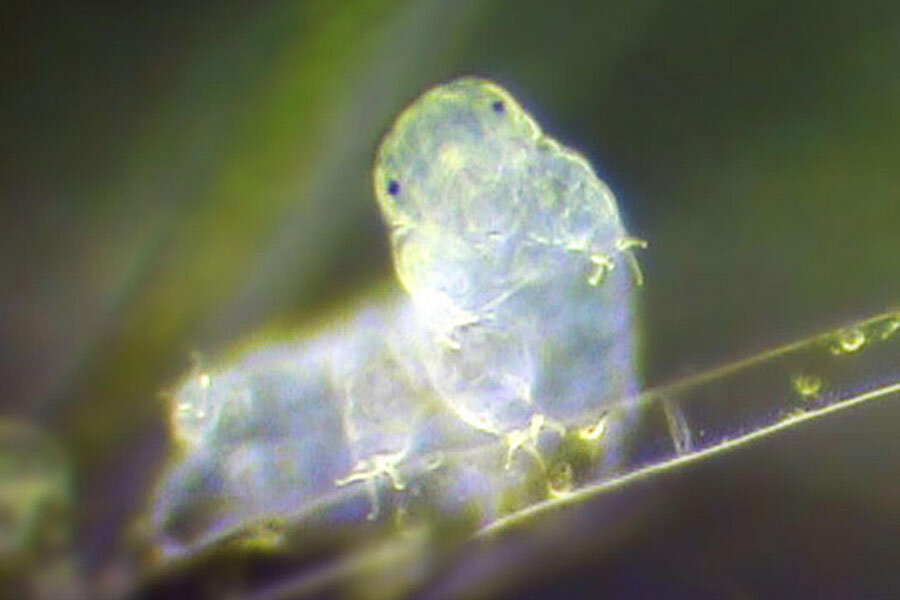Water bears' super resilience may be linked to foreign DNA
Loading...
Tardigrades, also known as water bears, are nearly indestructible. The microscopic animals can survive boiling water, extreme cold, and even a trip to space. Tardigrades can even be frozen for a year, or 10, and return to life when they thaw.
But these tough little animals are still surprising scientists.
When scientists sequenced the genome of water bears, they found that 17.5 percent of the animals’ DNA came from other species.
“We had no idea that an animal genome could be composed of so much foreign DNA,” study co-author Bob Goldstein said in a news release. “We knew many animals acquire foreign genes, but we had no idea that it happens to this degree.”
The researchers found that tardigrades have some 6,000 foreign genes. Most of these come from bacteria, which are known to swap genes, but some come from fungi, single-celled microorganisms known as Archaea, and even plants, the scientists report in a paper published Monday in the journal Proceedings of the National Academy of Sciences.
But how did the resilient water bears end up with so much foreign DNA?
Foreign DNA appears in an organism’s genome through a process called horizontal gene transfer. In that process, species swap genetic material directly, instead of exclusively inheriting DNA from the organism’s parents.
Dr. Goldstein and colleagues at the University of North Carolina at Chapel Hill think the tardigrade’s defense mechanism for extreme circumstances actually opens the door for this foreign DNA.
When the water bears are under extreme stress they curl up, expel their water and appear dead. In this shriveled state, the tardigrades’ metabolism shuts down almost completely.
The scientists think the animal’s DNA splits into tiny pieces during this process. When the animal starts to come back to life by rehydrating, their cells become leaky and can absorb molecules around the animal.
It is in that leaky state that foreign genes can infiltrate the tough animal’s genetic makeup, the researchers suggest. As the animal stitches its own DNA back together, the foreign pieces can get woven in too.
So what does this foreign DNA do for the tardigrades?
“If they can acquire DNA from organisms already living in stressful environments, they may be able to pick up some of the same tricks,” study lead author Thomas Boothby told Smithsonian magazine.
And the team has already found that the tardigrades switch on some of the foreign genes associated, at least in their original organisms, with handling environmental stresses.
If the animals do owe their toughness to foreign DNA, this would create a “positive feedback loop [that] builds up over time,” Dr. Boothby told the Atlantic. The tardigrades would survive extreme situations, gain more tough genes, and then be able to survive even more situations that would expose them to even more foreign DNA. But, Boothby said, “That’s speculation on our part.”
Such an occurrence of horizontal gene transfer in animals may change the way people understand evolution.
“When most people think of the diversity of life and flow of genetic information, they picture a tree with big branches generating smaller ones, but without any connection between the limbs,” Boothby said to Smithsonian. “We’re beginning to realize that instead of the tree of life, it might be more appropriate to think of the web of life.”
In that web, Boothby said in the news release, genetic material would be passed from branch to branch as well as vertically from mom and dad.
“It’s exciting,” he said. “We’re beginning to adjust our understanding of how evolution works.”








